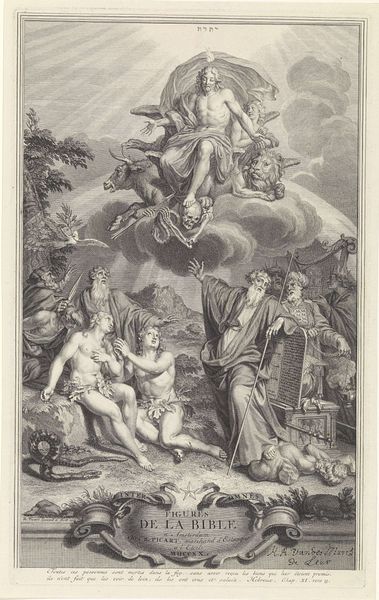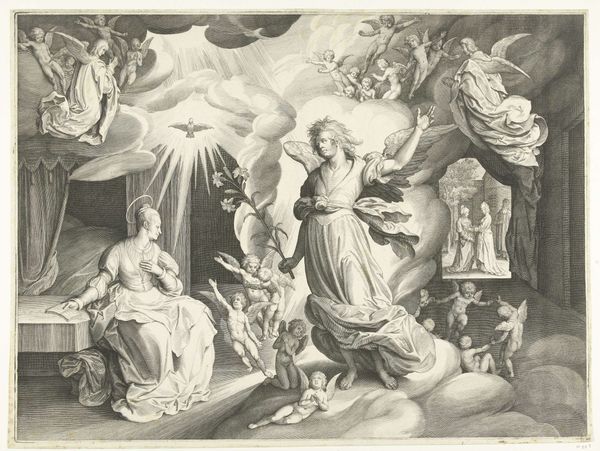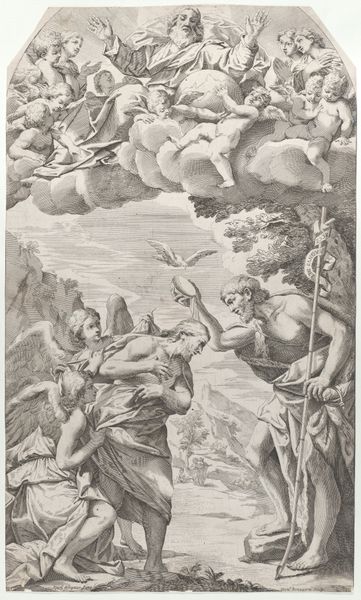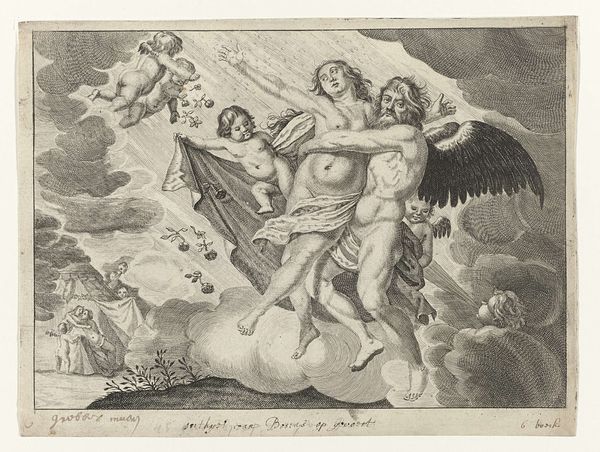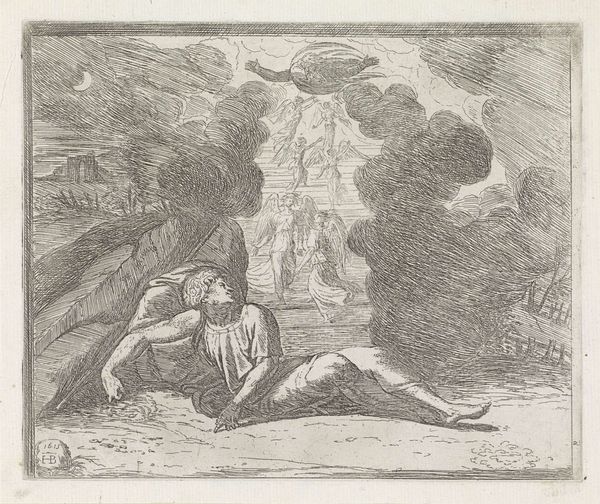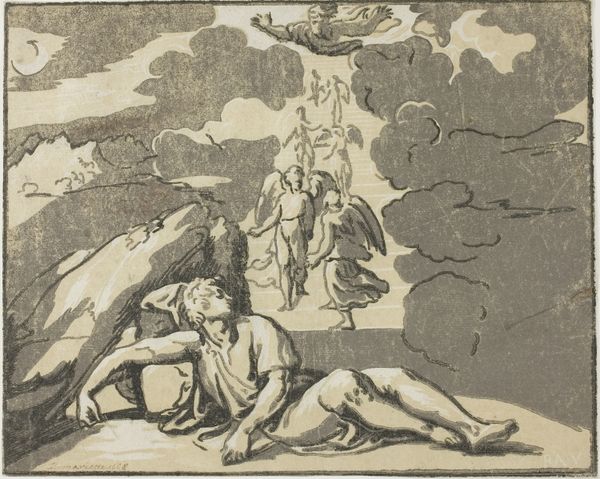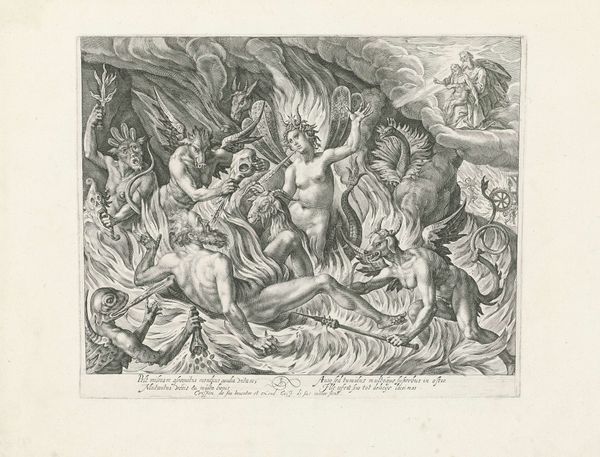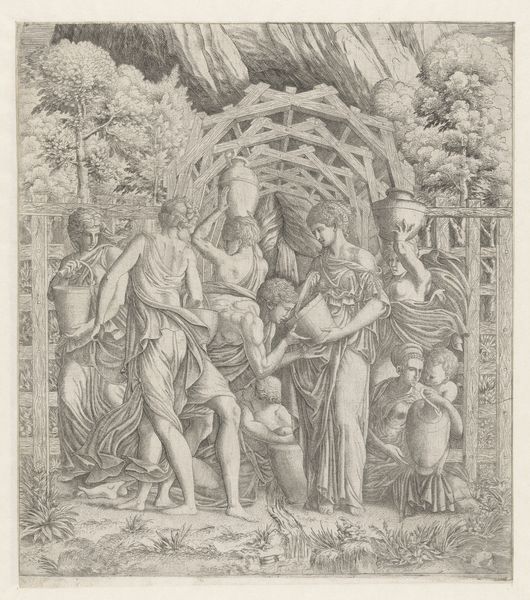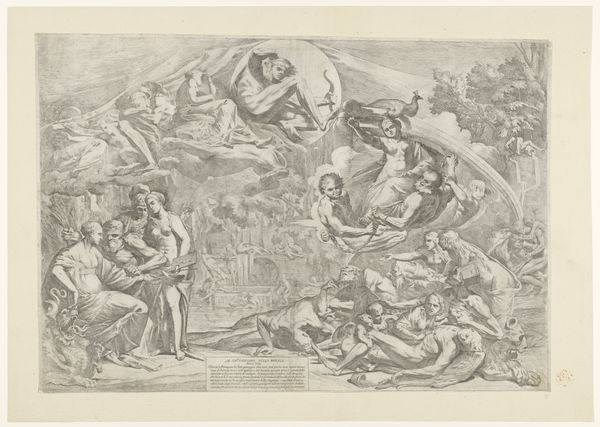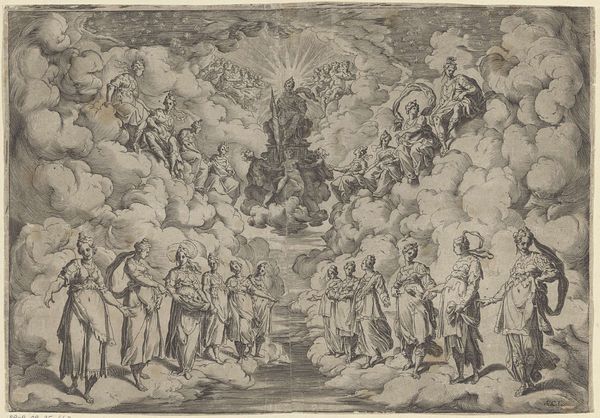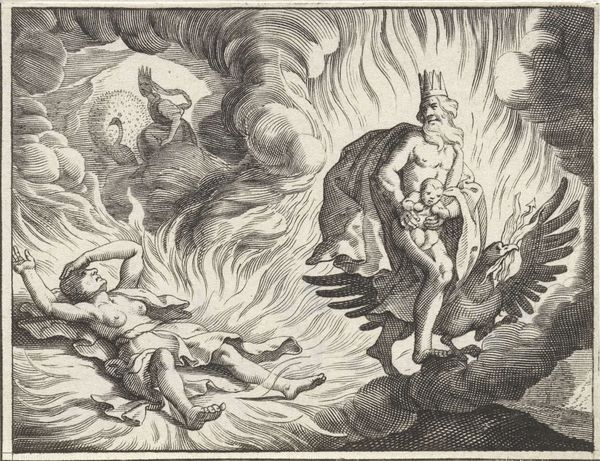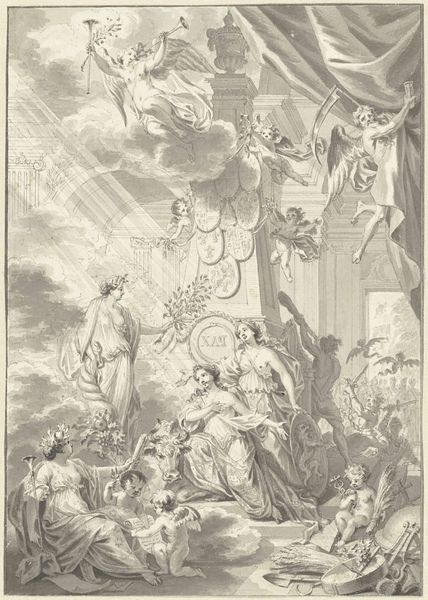
print, engraving
#
narrative-art
# print
#
landscape
#
figuration
#
northern-renaissance
#
engraving
Dimensions: height 258 mm, width 356 mm
Copyright: Rijks Museum: Open Domain
Curator: Jacob Bos created this engraving, "Jacob's Dream," sometime between 1530 and 1580. Editor: The atmosphere feels so still and dreamlike; that sleeping figure is compelling, stretched out under that rock while all these heavenly things transpire. It feels intimate even though it depicts a monumental Biblical scene. Curator: This print illustrates a well-known story from the Book of Genesis: Jacob, fleeing his brother Esau, rests his head on a stone and dreams of a ladder reaching to heaven, with angels ascending and descending. God appears at the top, promising Jacob land and descendants. Editor: The very architecture of this print highlights the patriarchal power dynamics. A male God oversees male angels ascending and descending for the benefit of another male…Where are the feminine figures, the representation of anything other than ordained masculine energy? Curator: The conventions of Northern Renaissance art influenced the image’s presentation, blending the ethereal and the earthly in ways that might strike contemporary audiences as… uncritical? There's a realism in Jacob's slumbering form and the details of the landscape that contrasts with the stylized, almost theatrical rendering of the ladder and angels. Editor: Right. The political landscape of the Dutch Republic in the 16th century shapes this piece significantly, of course. We're in the early stages of the Reformation, and these images served various purposes, from simple devotional aids to complex theological statements. I wonder about the print's accessibility to a broad audience. Its success relied, after all, on shared cultural narratives. The engraving helped normalize those narratives but did that ultimately silence alternate interpretations of faith? Curator: That is quite interesting point! It suggests art as both reflection and instrument of ideology. Jacob’s dream became symbolic for future generations. People may have wanted some assurance about God’s presence on Earth despite the endless fighting that was occuring between Protestants and Catholics at that time. It would be compelling to recontextualize these visual themes in artwork now as a statement about the political issues that exist today. Editor: Agreed. Thank you! Curator: It's been a pleasure.
Comments
No comments
Be the first to comment and join the conversation on the ultimate creative platform.


